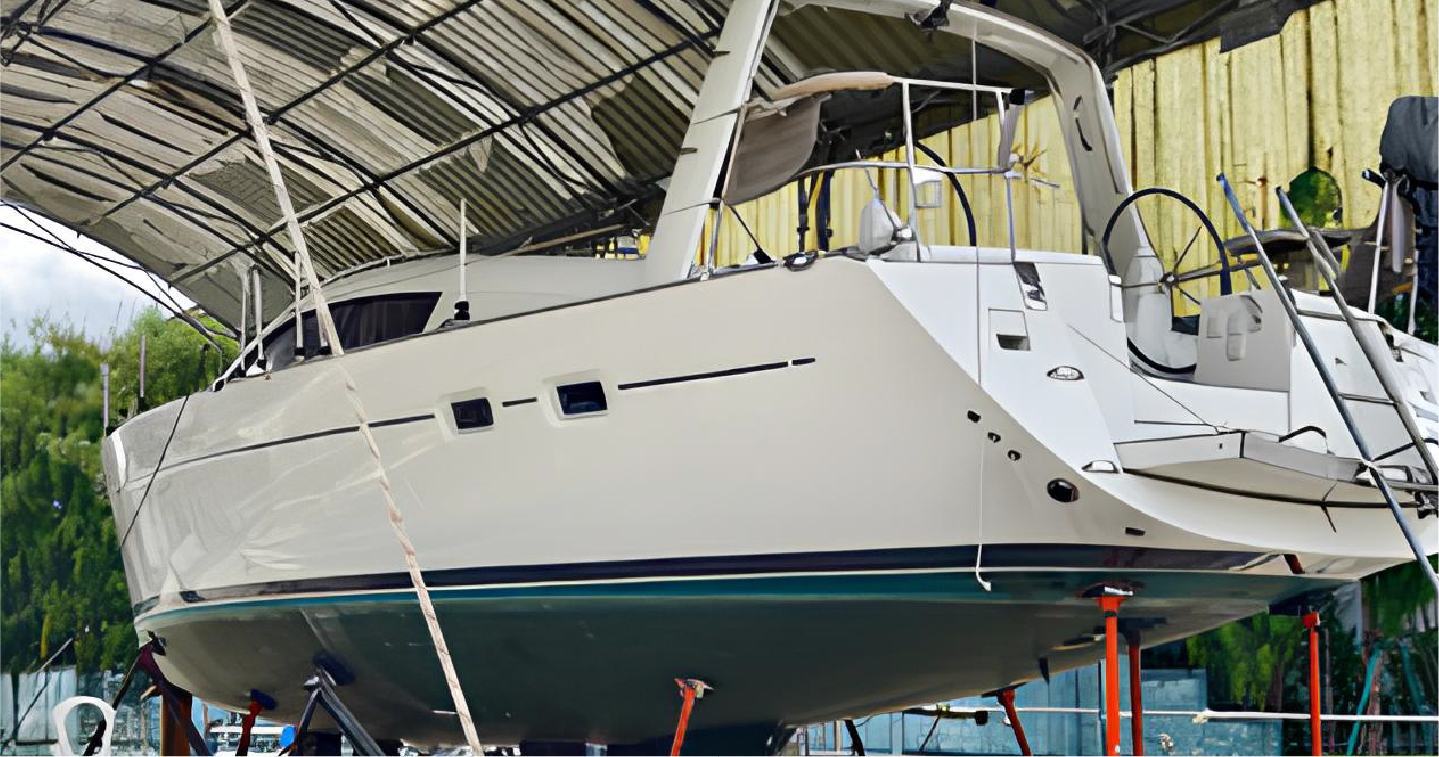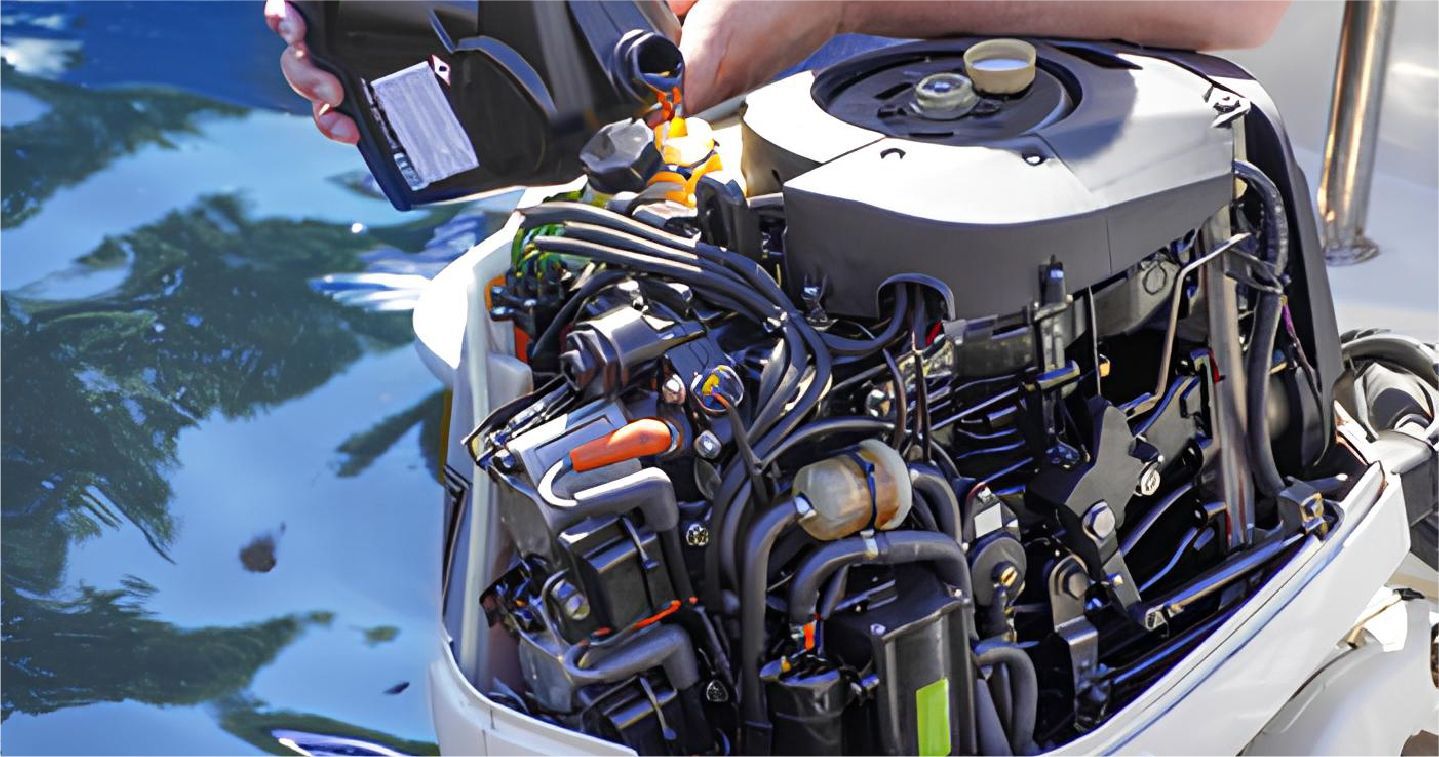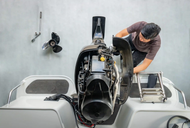Springtime Boat & Outboard Checklist - Get Back on the Water the Right Way
Spring rolls around, and every boater feels that pull to get back on the water.
But after months of sitting, your boat and outboard aren’t just ready to go without a check. Winter storage, cold weather, and idle time can leave behind problems that cost money or even cut a trip short if ignored. That’s why a springtime boat and outboard checklist matters. It’s not about polishing for looks; it’s about making sure your engine fires strong, your systems run safely, and your paperwork is in place before you ever hit the ramp.
In this guide, we’ll walk through each step, inspection, maintenance, safety gear, and even the trailer, so you launch this season prepared, confident, and with no surprises holding you back from smooth boating days.
1. Inspecting Your Boat After Winter Storage

iStock/simonkr
When you roll the cover off your boat after winter, it can feel like opening a time capsule. Sometimes everything looks fine, other times you notice cracks, mildew smells, or a few surprises left behind by critters. This is the point where you slow down and go piece by piece.
Start with the hull. Walk around, get down low, look for stress cracks, blisters, or any warping that could have come from cold storage. Even hairline cracks matter if left ignored. Check the keel area, especially, as it takes the most hits.
Inside the boat, go through rails, cleats, and fittings. A winter of condensation can lead to corrosion. Wiggle them, check bolts and screws. Any looseness now will turn into a headache when the waves start pounding later.
If the interior smells damp, lift the seats and flooring panels. Mildew spreads fast in dark compartments. Wipe everything with marine-safe cleaner and dry it fully. No shame in running a small dehumidifier if storage left it damp.
This is also when you check for pests. Mice chew wiring insulation, leaving surprises that only show when you’re halfway across the lake.
2. Fuel System Check
Fuel is the lifeline of your outboard. But fuel that sat all winter? That’s trouble. Ethanol blends draw in moisture, and stale gas clogs injectors fast. Before you even think of cranking the key, empty out any old fuel in the tank.
- Inspect the fuel lines to improve the motor's fuel efficiency.
- Run your fingers along them
- Replace any softness, cracking, or brittleness
- Check the primer bulb; it should feel firm, not mushy.
- Clean the fuel injector.
- Replace the fuel filter
That filter keeps debris and water from killing your engine. If you skip it, don’t be surprised when you’re dead in the water later.
Look around the fittings for leaks. Even a tiny seep can grow quickly once pressure builds. Gas and boats don’t mix well if something goes wrong.
This step is like clearing the arteries of your boat. Clean fuel, tight lines, fresh filter, that’s the setup you want going into spring.
3. Electrical System and Battery Care
When spring rolls in, the first thing important for any boater is not to just trust that battery sitting since last fall. Batteries lose fluid in storage, and some even freeze inside if not pulled. Take it out, give a look at the case, see if it’s swollen or cracked, replace it before it strands you on water. If terminals get green corrosion, clean them with a wire brush; a little grease on top keeps them clean. Hook it to a charger, let it hit full charge, then test with a voltmeter; if it doesn’t show around 12.6 volts, you’re looking at less energy.
Cables and wires running to pumps, lights, electronics, they corrode in damp bilges, and rodents chew them too. Trace them, tug gently, if brittle or exposed copper shows, swap it out. Nothing worse than losing nav lights in the dark or the bilge pump not kicking when the hull takes water. Flip all your switches, test the horn, radio, and GPS if you have.
Don’t wait till launch to find a dead circuit. Electrical problems are sneaky; they look small, but they ruin trips fast. Little attention now gives big peace later when the engine fires and every light glows steady.
4. Engine & Outboard Maintenance

iStock/GKV
This is where most of the springtime checklist lives, your outboard. Boats can have shiny decks, polished rails, and spotless covers, but if the engine doesn’t purr, you’re going nowhere.
- Start with the oil. If you didn’t change it before storage, drain and replace engine oil and gear oil. Old oil holds acids and moisture, the worst thing you can put back into an outboard when spring comes.
- Next, pull the spark plugs. Even if they look fine, compare the wear patterns. They tell you a lot: oily, dry, burnt. Replace them if they look tired.
- Flush the cooling system. Use fresh water and make sure the telltale (that small stream of water) spits strongly. If it doesn’t, the impeller may be shot. Replace it; water pumps are your outboard’s life support.
- Now spin the propeller. Look for dings, bends, and fishing line wrapped around the shaft. Even minor damage causes vibration that travels through the whole motor.
- Throttle and shifting should be smooth. If stiff or sticky, it’s time to correct outboard throttle & shift cables; a wrong fit will wear gears and fight your hands. Treat this step seriously; engine care is boat care.
This is also the right time to grease moving parts, check the linkage, and verify the idle speed once it’s running. Your outboard deserves the same spring prep as the rest of the boat, maybe more.
5. Safety Equipment Check

iStock/Nadezhda Dorokhova
Before you even think of launching, lay out all the safety gear.
Life jackets first, check straps, buckles, seams. If foam feels soggy or cracked, toss and replace it. Each passenger needs a good fit, not just something tossed under the seat. The fire extinguisher is next. Shake it, look at the gauge, the needle should sit in the green. An expired or empty extinguisher is just dead weight on board.
Pull out your flares, check dates stamped on the side. Old flares won’t fire when you need them most. Same with an air horn or whistle, make sure it works loud and clear. First aid kit, open it, don’t just assume. Bandages dry up, bottles leak, replace what’s missing.
Check the throwable device, that square cushion or ring buoy. If the fabric is torn or the foam crumbles, it won’t float right. Keep it where the hand can grab fast. Safety gear might look boring compared to shiny outboard parts, but when trouble hits, this is what saves your crew.
6. Trailer Inspection (If You Haul Your Boat)
A lot of boats never reach the water because the trailer gives out on the way there. Don’t let that be you.
Walk around, start with tires, look for sidewall cracks, bulges, and low tread. Even if the tread looks fine, old rubber dries out and can blow under load. Check pressure with a gauge. Don’t forget the spare; many skip it till they’re stuck on the highway.
Lights and wiring come next. Plug in, hit brakes, turn signals, running lights. If one flickers or stays dark, most times it’s the ground wire corroded. Clean contacts, check plugs for rust. A dead light on the road is a ticket waiting to happen.
Wheel bearings need grease. Spin the wheel by hand; it should roll smoothly, no grinding. If you hear noise or feel play, pack new grease or replace bearings. Safety chains, winch strap, and bow hook all take hard pulls. If rusted, frayed, or cracked, swap them now.
Trailer bunks or rollers should line up and support the hull right. If the carpet on the bunks is worn, it’ll scrape gelcoat every launch. Treat trailer inspection like part of spring checklist, because without it, the boat never makes it to the ramp.
7. Cleaning & Detailing

iStock/Urška Batistič
After months in storage, your boat deserves a reset. Cleaning extends the life of every surface.
Dirt, salt, and mildew eat away at fiberglass and vinyl if you let them sit. Start outside with a full wash using marine soap, not dish liquid, because that strips wax. Rinse down, then run your hand along the hull, feel for rough spots. A good coat of wax after washing seals the gelcoat, keeping UV and water stains off.
Inside, open every hatch, scrub bilge, and storage lockers. Mold hides there. Use mildew remover on black spots; don’t just spray perfume cleaners. Vinyl seats and cushions, wipe with a protectant that keeps them soft. Cracks come fast when the sun bakes untreated vinyl. Canvas covers and bimini, wash with gentle soap, let dry, then spray with water repellent. That keeps rain from soaking through.
Metal parts like rails, cleats, motor and latches, polish them up. It’s not just shine; it slows corrosion and makes hardware last longer. Windows and screens, clean them, check seals for leaks. When you detail, you also find issues, loose screws, cracks, and stains.
This step brings back pride; the boat feels alive again. Cleaning and detailing gives brutiness and readiness, makes you see she’s not just a tool, she’s your ride for the season.
8. Paperwork & Registration
This part doesn’t get grease on your hands, but it’s just as critical as an oil change. Nothing worse than rolling up to the ramp, boat shining, motor ready, and the officer asks for papers you don’t have.
- Start with registration, look at the sticker, and check the expiration date. If it’s out, renew before the season kicks off, saves you fines and embarrassment at the dock. Keep a copy onboard in a dry pouch where it won’t get wet.
- Insurance next. Boats cost money; accidents cost more. Call your provider, check coverage limits, and see if they still fit the value of your boat and outboard. If you upgraded gear, add-ons, or electronics, make sure policy covers them too. Some lakes or marinas won’t even let you launch without proof.
- Licenses and permits, many states require an operator card or safety course. If you fish, you might need a separate license. Don’t wait till the patrol boat pulls beside you to remember.
- Also, check trailer tags if you haul. An expired trailer plate gets you a ticket before you even touch water. Paperwork sounds boring, but it’s part of spring prep. When all the docs are in place, you ride with confidence, no stress, hanging on to your season start.
9. Test Run Before Hitting the Water
Before you push off that first spring morning, always give your boat a dockside shakedown. Hook up water muffs to the outboard, fire it up, and let it idle. Listen closely, the engine should sound steady, no loud knocking or coughing. Warm it till the thermostat opens, watch the telltale stream, it should spray strongly and clean. A weak stream tells you the cooling system is clogged or the impeller is tired. Better to find that here than drifting dead.
Work the throttle, shift into forward and reverse while tied. The shifter should slide smoothly, with no grinding or stiff jamming. Steering wheel too, turn full port to starboard, feel for binding or loose play. A stiff helm now only gets worse once you’re under load.
Flip all switches, bilge pump, nav lights, horn, and electronics. Pour some water in the bilge, confirm the pump kicks in and pushes it out. Don’t trust it by sound alone; see water moving.
Take 15–20 minutes letting her run, checking gauges for oil pressure, temp, and volts. This dry test saves you from surprises when waves hit. A quick test run before hitting the water means readiness, not repair dock, and that’s how real boaters start the season.
Extra Tips Every Pro Boater Knows
- Always carry a small tool kit onboard. Sometimes it’s a 10mm socket or a screwdriver that saves your day.
- Don’t ignore small leaks of oil or fuel. That’s often the first reason that kills your engine before bigger failures hit.
- If your motor looks weathered, it’s fine to paint your motor, not just cosmetic, but it protects against corrosion and saltwater attack.
- Don’t delay when it comes time to repair your engine. Small issues like weak spark or clogged carb snowball into seized pistons if ignored.
- When buying or upgrading, think carefully about the outboard engine for your boat. Overpowering the transom, underpowering makes your ride sluggish and unsafe in heavy chop.
Conclusion
That’s the springtime boat & outboard checklist laid out plain. It’s not glamorous, it’s not quick, but it’s the line between a season full of memories and a season full of breakdowns.
Walk through each step: hull, fuel, battery, engine, safety, trailer, cleaning, paperwork, and a test run. You’ll cover everything that matters. Whether you’re running the newest Outboard Engine for Your Boat or an older two-stroke, they all need the same care coming out of winter.
Posted by Frank Abagnale Jr.


